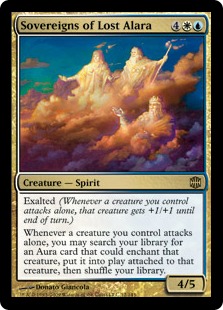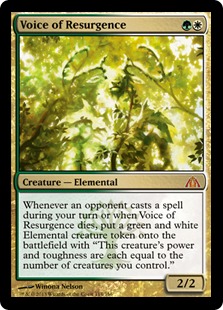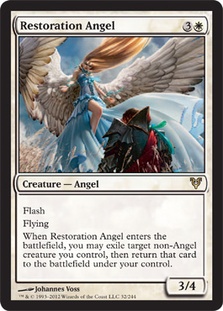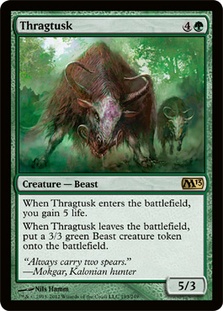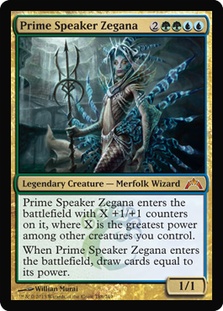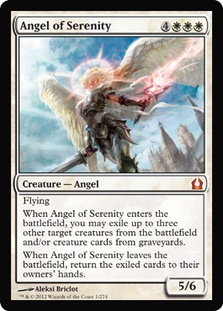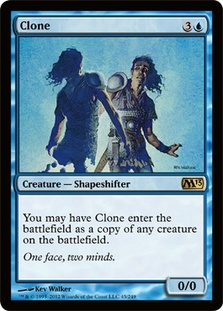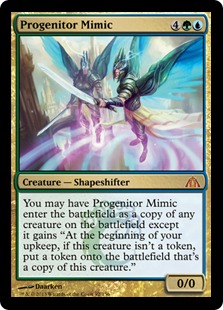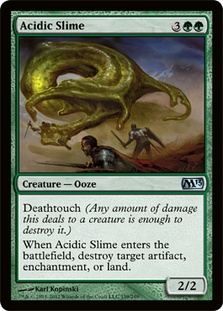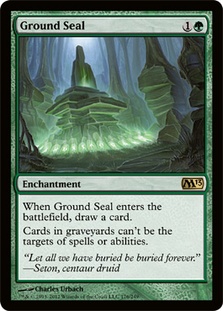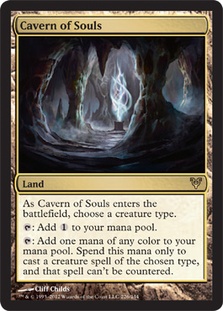The leaves will fall, and so will you.
When you do, bury me under them too.
This past weekend, I was a knot on a log. I just stayed home and scarfed down pizza while I watched the coverage of Pro Tour Dragon’s Maze. I watched many of my friends prosper and others falter. Although I did the same thing for Pro Tour Gatecrash, I realized that something was different this time. All of my friends had qualified for the Pro Tour, but I was stuck at home doing nothing.
And that realization began to sting.
Every mistake I saw on camera became a twist of the knife. Every bit of the commentary began to curdle in my stomach. My shouts of corrections turned to ashes in my mouth, so I decided to take Kali out to dinner.
The next morning, Kali left home to go on a work-related trip to Texas. I sat at home and watched the Top 8 of the Pro Tour, but at that point I just felt hollow. I know that I’ve been slacking lately, and that’s what hurts the most. I haven’t really put in the work, and I haven’t done well as a result. You can’t expect to get anything for free in this life, and I’m starting to learn that the hard way.
There is a PTQ this weekend right here in Roanoke. I’m going to start here and hopefully use this momentum to carry myself forward in my Magic career. I haven’t been qualified for a Pro Tour since Barcelona last year, and I aim to change that quickly. I’ve missed out on a lot of opportunities due to laziness, apathy, whatever you want to call it. I just haven’t felt it.
It may be that I’ve grown tired of the grind. It may be that I’ve "lost the fire," but I don’t really think that’s the case. I want to win just as badly as I ever have, but I haven’t had the motivation to do anything about it. Last weekend really lit a fire under my ass, and I’ve been putting in some work on a few different decks that I think show some promise.
The Reinvention of Mythic
Seconds pass, we’ll make it through.
Eventually we all go home.
For most of you, the term "mythic" means rare. Very rare. Like more rare than most rares. You think of Jace, the Mind Sculptor. You think of Geist of Saint Traft. You may even think of Chandra Ablaze and chuckle to yourself. But for me, mythic means mythic. It means big. It means fast. It means…expensive.
If you’ve been around the game for the last four years or so, you may have run into this little number by Zvi Mowshowitz:
Creatures (30)
- 4 Birds of Paradise
- 3 Rafiq of the Many
- 4 Rhox War Monk
- 4 Noble Hierarch
- 1 Thornling
- 4 Knight of the Reliquary
- 4 Baneslayer Angel
- 4 Lotus Cobra
- 2 Rampaging Baloths
Lands (27)
Spells (3)
Sideboard

This is a deck that some people took to Pro Tour San Diego and did pretty well with, but it ultimately evolved into a complete monster. The original list was created before the release of Rise of Eldrazi, and that set added a few goodies to the mix and gave this guy a bit of a boost:
Now, I know what you’re thinking. How could a deck featuring those two cards function, let alone be fast enough to compete? Well, it occasionally got run over by the aggressive decks, but it dominated a room full of control and midrange. It was a little slow at times, but powerful mana accelerants added a lot to the deck’s overwhelming success. The finished product:
Creatures (28)
- 4 Birds of Paradise
- 4 Noble Hierarch
- 4 Knight of the Reliquary
- 4 Sovereigns of Lost Alara
- 4 Dauntless Escort
- 4 Baneslayer Angel
- 4 Lotus Cobra
Planeswalkers (5)
Lands (15)
Spells (12)
Sideboard

I’m telling you about these two decks to set up to reveal the deck I’ve been working on in Standard. I must say that it is quite the doozy, but I hope you like it. Before we get down to brass tacks, I want to explain exactly what led me to this point.
For starters, I don’t like G/B/W Reanimator. I’ll be honest—any deck that relies on the graveyard too much usually ends with me biting the dust. Rest in Peace and Ground Seal are quite problematic, and this often leads to a multitude of dead cards in your hand.
Don’t get me wrong—I think G/B/W Reanimator is quite good. The numbers don’t lie. It is probably the most consistent and powerful deck in Standard, and you rarely see a Top 8 without at least one copy. You can also see how good it is at closing out a tournament. While Jund and the aggressive decks have the tools to keep this monstrosity in check on occasion, there are a lot of times when traditional disruption just doesn’t do it. They start a chain of Acidic Slimes or ramp out their Thragtusks into Angel of Serenity and just stop you in your tracks.
G/B/W Reanimator is very consistent.
I should probably like the deck, but I just don’t. It might be because my history with decks like Dredge and Reanimator, as losing to a single hate card just leaves a bad taste in my mouth. There are usually ways around the hate cards in question, but the hoops you have to jump through aren’t always worth it.
But I want to do powerful things.
So that was my mission. I wanted to build a deck that takes advantage of midrange decks by exploiting their severe lack of spot removal and punishing them for it as much as possible. There are many ways to do it, but the trick is finding the right combination of creatures to push things over the edge in your favor. I’m not positive I’ve done that quite yet, but I’m working on it! Hopefully by Saturday I’ll have all the kinks worked out.
Mythic Revisited
Creatures (35)
- 4 Arbor Elf
- 4 Avacyn's Pilgrim
- 4 Restoration Angel
- 4 Somberwald Sage
- 4 Thragtusk
- 3 Angel of Serenity
- 4 Centaur Healer
- 3 Prime Speaker Zegana
- 4 Voice of Resurgence
- 1 Progenitor Mimic
Lands (21)

Meat and Potatoes
Throughout the rise and fall, everything, everything changes.
My favorite part of this deck is the fact that you actually have an early-game plan against the aggressive decks.
Not too many of them outside of Mono-Red Aggro have begun to play Pillar of Flame, which makes a lot of your creatures much better. For example, it is much worse for you when your opponent can cast Pillar of Flame on your Somberwald Sage and play an additional creature during that turn. That scenario is much less likely when everyone is playing Searing Spear instead. And you can add to this the fact that a lot of the aggressive decks (like Naya Blitz) play close to no removal at all.
With such a low number of Pillar of Flames running around, Voice of Resurgence is especially potent. It is amazing against both aggressive and control decks and gives you something to do with you early mana if you don’t have a three-drop to cast. It protects a lot of your creatures from counterspells, protects your board from Supreme Verdict, and just punishes the opponent for being tricky with things like Azorius Charm.
Traditional removal is pretty mediocre against Voice of Resurgence, which is why I like it so much in the deck. The rest of your early drops are quite vulnerable, so it is nice to have protection that makes their Searing Spears a lot worse. The fact that Voice isn’t a Human is just a sweet bonus, as that means you can block Stromkirk Noble.
Centaur Healer might be worse than Loxodon Smiter due to all the Searing Spears running around, but I quite like the three-point life swing. If they do end up having a removal spell for it, you aren’t left high and dry. Three life points can mean all the difference when facing off against an aggressive deck, and both look pretty miserable against Ghor-Clan Rampager.
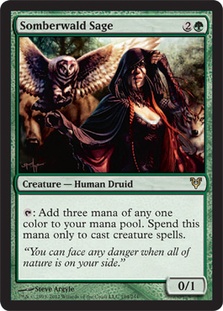 |
vs. |
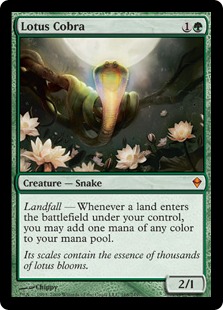 |
Somberwald Sage is an enabler. It might not be the kind of enabler you’re used to seeing. It doesn’t wave chocolate cake in your face when you’re on a diet or try to get you to go to the bar at midnight when you’re attempting to quit drinking. What it does allow you to do is win games.
Pretty easily.
Somberwald Sage is an amazing card in a format where there is very little spot removal. Of course, Jund and a few other decks will be able to kill it easily. Somberwald Sage isn’t for those decks. Just like Lotus Cobra in the older versions of Mythic, we need a powerful mana accelerator against the decks that are trying to get to the long game. We need a way to outpace the other green decks and to put the game away before they can get their feet off the ground.
Somberwald Sage is the key to that. In a lot of scenarios, Somberwald Sage acts as a Dark Ritual or better every turn. When you’re chaining Prime Speaker Zegana alongside Restoration Angel and Clone, all you want is access to more mana so you can continue to deploy a multitude of pain on your opponent. Without Somberwald Sage, I wouldn’t even bother with this deck.
If you have kept up with Brad Nelson over the last six months, you might have seen his "Hoof, There It Is!" deck. This was a predecessor to G/B/W Reanimator in both pre- and post-Dragon’s Maze Standard. It focused on using Somberwald Sage to power out fatties like Craterhoof Behemoth and Angel of Serenity, giving the green deck a way to capitalize on the severe lack of spot removal in the format. It wasn’t a great card against U/W/R Control—or any deck with sweepers—but it gave you a way to interact with the aggressive decks in a big way before they were able to overwhelm you.
This is important because the increase in ways to "deal" with Thragtusk is pretty bad for midrange green decks. At some point you have to find a new way to attack these decks, and I think Somberwald Sage is in a sweet spot to do it.
The meat of the deck starts pretty late in the game, as you don’t want to cast Restoration Angel very early unless you’re under a lot of pressure. The "blink" interactions you get with Restoration Angel are just absurd and allow you to do some filthy things. Thragtusk is a great fatty at just the right cost. After playing out Voice of Resurgence and Centaur Healer to slow them down, Thragtusk gives you a way to stabilize. The five-life buffer is such a pain to the aggressive decks, and the two bodies you get for such a low cost make most of their spot removal look embarrassing.
Prime Speaker Zegana and Progenitor Mimic are obviously fighting for the same slot. They’re both good. In fact, they’re both very good. I’ve ranged from zero to three on both of them, but I’m still not sure what the correct number is for each. I do know that after board I want access to a lot of Clone effects in some matchups, so having a singleton maindeck and another in the sideboard to go along with Actual Factual Clone is pretty sweet.
In all honesty, Prime Speaker Zegana is one of the best cards you can have against some of your worst matchups. It gives you a lot of extra cards to recover from Supreme Verdict and allows you to simply overpower any other midrange deck. Without Prime Speaker Zegana, I could easily see myself flooding out very regularly, but having access to three makes me feel more comfortable about playing so many raw mana sources.
The rest of the deck is pretty standard. There really isn’t all that much to look—OH MY GOD. I can’t believe I almost forgot to talk about Angel of Serenity.
But seriously, I’m gonna let you finish, but Angel of Serenity is the best fatty in Standard. Other fatties deserve an honorable mention, but have you actually cast an Angel of Serenity on turn 3 against an aggressive deck? The feeling is…unbelievable. The game basically ends on the spot since they have a tough time dealing with any creature, let alone a 5/6 flier that just destroyed their board.
The Sideboard
While there isn’t an interaction with Angel of Serenity and Restoration Angel, there is a lot of room to play with Clone. With Clone, you can copy another creature (like Thragtusk) early in the game and use Restoration Angel to blink it later, copying your Angel of Serenity (or theirs). The Clones give you a lot of play when it comes to big creature matchups. You don’t want them against something like Thundermaw Hellkite, but you would love to copy your opponent’s Thragtusk.
Clone gives you a way to trump their Angel of Serenity in a way that makes it very hard for them to fight back. In addition to hitting their mana creatures, Clone only costs four mana, and you can still cast it very easily after they’ve used their Angel of Serenity to exile your mana creatures.
Clone is also a decent answer to Olivia Voldaren, which can wreak havoc on your creature base if you don’t draw an Angel of Serenity. Hopefully this won’t be an issue, but I could easily see playing a few Selesnya Charms between the maindeck and sideboard to help alleviate this problem. The fact that Selesnya Charm also hits Sire of Insanity is another good argument for its inclusion, and I’ll probably try to work it in somewhere over the next few days.
A lot of other midrange decks are going to try to beat you with Acidic Slime. This is actually pretty hard to do considering how many lands and mana-producing creatures you are playing. It is actually much more likely that they’ll beat you by killing your mana creatures rather than killing your lands, so I wouldn’t really recommend bringing in Acidic Slimes against them since you don’t have any spot removal to take care of their Avacyn’s Pilgrims.
Acidic Slime is mostly to fight the control decks. While we don’t have an Unburial Rites engine that punishes them for using Supreme Verdict, we do have a ton of Clones and Restoration Angels to keep their resources at bay. If you can’t find an Acidic Slime early on, it isn’t the end of the world. We always have:
While Aetherling hasn’t seen a lot of play in Standard since its release, did you watch the Pro Tour coverage? Aetherling was unbeatable! I don’t think that is any less true in Standard because there isn’t really a great way to interact with it from the control side. Sure, you can use Azorius Charm and various other things to slow it down, you but also have to deal with this Thragtusk, and this Prime Speaker Zegana, and even this Voice of Resurgence.
If you try to be this deck with Azorius Charm, then you’re gonna have a bad time. [Editor’s Note: +1 for South Park references.]
This card won’t necessarily seal the deal against G/B/W Reanimator, but you do get to slow them down tremendously without really hurting yourself too much. The draw effect helps keep the juices flowing, whereas something like Rest in Peace would actually cost you a card. I know that exiling the graveyard one good time is sometimes important, but I would be pretty happy if they spent an entire turn killing my Ground Seal, only to have me untap and use Angel of Serenity to wipe their board.
Ground Seal is a bit narrow, as are most anti-graveyard cards, but I think it is a necessary evil.
The last card I want to talk about is Cavern of Souls, though I know there are already a few of them in the maindeck. While this deck isn’t necessarily afraid of counterspells due to Voice of Resurgence, you would still like your creatures to resolve. I know that Cavern of Souls and I have had our differences in the past, but I think I’m quite over them. If people want to try to Rewind all of my stuff, then **** ’em. We got Cavern of Souls.
With so many large, important creatures in the deck, having a way to blank half or more of the opponent’s answers is huge. Just resolving a single Prime Speaker Zegana can spell game over in a lot of scenarios against the control decks. Their goal is to grind you out, so you have to make sure your spells have the greatest impact possible.
And don’t forget that Cavern of Souls making Aetherling uncounterable is lights out for any sort of U/X deck.
After playing some matches with the deck, I know that this is where I want to be. I want big, powerful effects and a lot of mana acceleration. I don’t think Sphinx’s Revelation and counterspells are going to have a big enough impact on a format full of aggressive decks and Sire of Insanity alongside Cavern of Souls. I want to be proactive, and I think this is one of the best decks to accomplish those goals.
While the deck is far from perfect, this is the most comfortable I’ve felt with a new-ish brew in quite some time. Voice of Resurgence has given the Prime Speaker Bant deck new life, and I’m ready to push it even further. More than anything, I want to win the PTQ this weekend. I know that I’m "giving away my technology" or whatever, but I just write about what’s on my mind. This week, it was the Pro Tour and Mythic Revisited. Next week? Who knows!
There must be somewhere that cigarettes burn through the night
And the leaves don’t abandon their trees to the light
Where the skies always clear
And the summer never ends
Won’t you take me there?
Thanks for reading.
Todd Anderson
strong sad on Magic Online
@strong_sad on Twitter
PS: If you want to hear the music from the lyrics throughout the article (as well as the article title) check it out here!

